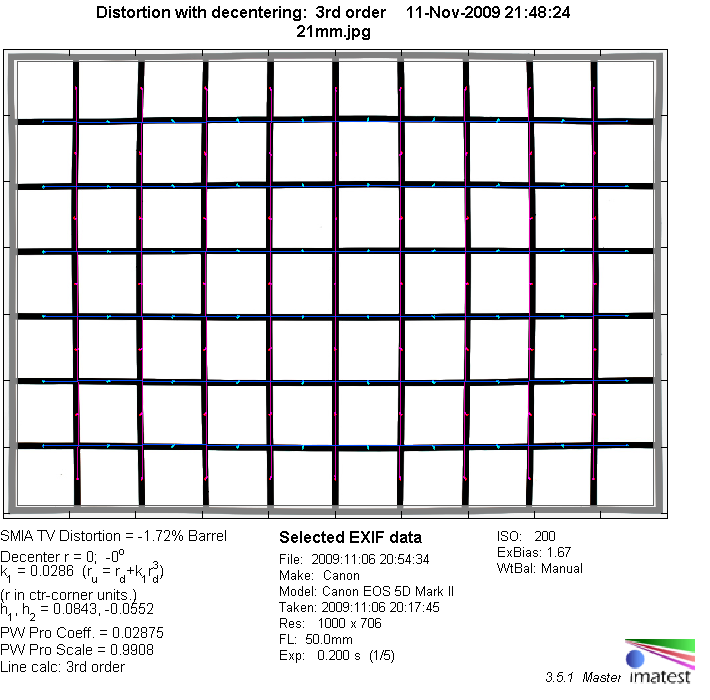|
Zeiss Distagon T* 21mm f/2.8 ZF (ZE) (on Canon EOS) - Review / Lab Test - Analysis |
|
Lens Reviews -
Canon EOS (Full Format)
|
|
Page 2 of 2

Distortion
Ultra-wide lenses are usually a bit "laissez-faire" when it comes to distortion but the Distagon is actually capable of producing a fairly moderate degree of barrel distortion (~1.7%) albeit with a little mustache sub-style.

The chart above has a real-world size of about 120x80cm.
Vignetting
The Zeiss lens has one weakness - the amount of vignetting is fairly hefty at around 2.5EV at max. aperture. This may be a rather typical value within this class but regarding its ultra-large front element we hoped for a better performance here.

MTF (resolution)
The resolution of the Zeiss lens is very high straight from f/2.8. The peak quality is reached at f/5.6 but there're only minor quality variations across the tested aperture range actually. The best news is the comparatively even quality across the image field ... which isn't exactly a well-known characteristic for EOS users in this focal length class.
Please note that the MTF results are not directly comparable across the different systems!
Below is a simplified summary of the formal findings. The chart shows line widths per picture height (LW/PH) which can be taken as a measure for sharpness.
If you want to know more about the MTF50 figures you may check out the corresponding Imatest Explanations

Chromatic Aberrations (CAs)
Lateral CAs are very well controlled at less than 0.8px on the average at the image borders (and even in the corners). This is pretty much negligible in field conditions.

Sample Images
At a later stage we'll provide some sample images in the scope of the corresponding Nikon review based on the D3x.
VerdictThe Zeiss Distagon T* 21mm f/2.8 is not only a legendary lens - it is also capable of delivering its qualities on today's DSLRs.
The sharpness is already impressive at f/2.8 and it does even get slightly better at medium apertures. Lateral CAs are very low
and as such contributing to the high resolution perception. Distortions are also well controlled but if you want to
correct the remaining artifacts this may not be all that easy due to the secondary mustache style here. A weakness is the level of
vignetting at f/2.8 and, to a lesser degree, at f/4.
Just like the rest of its family the Zeiss lens is built to the highest standards. Some users may complain about the lack of AF but, frankly,
this is usually a non-issue for an ultra-wide lens. The focus confirmation is available in the viewfinder (ZE version) and in very critical
(close focus) scenes Live-View can give you a helping hand. All-in-all highly recommended!
|